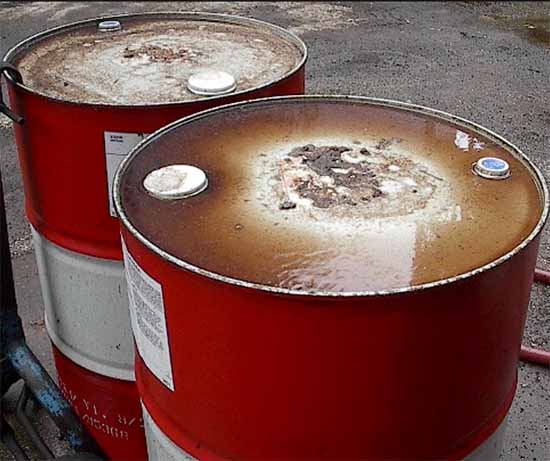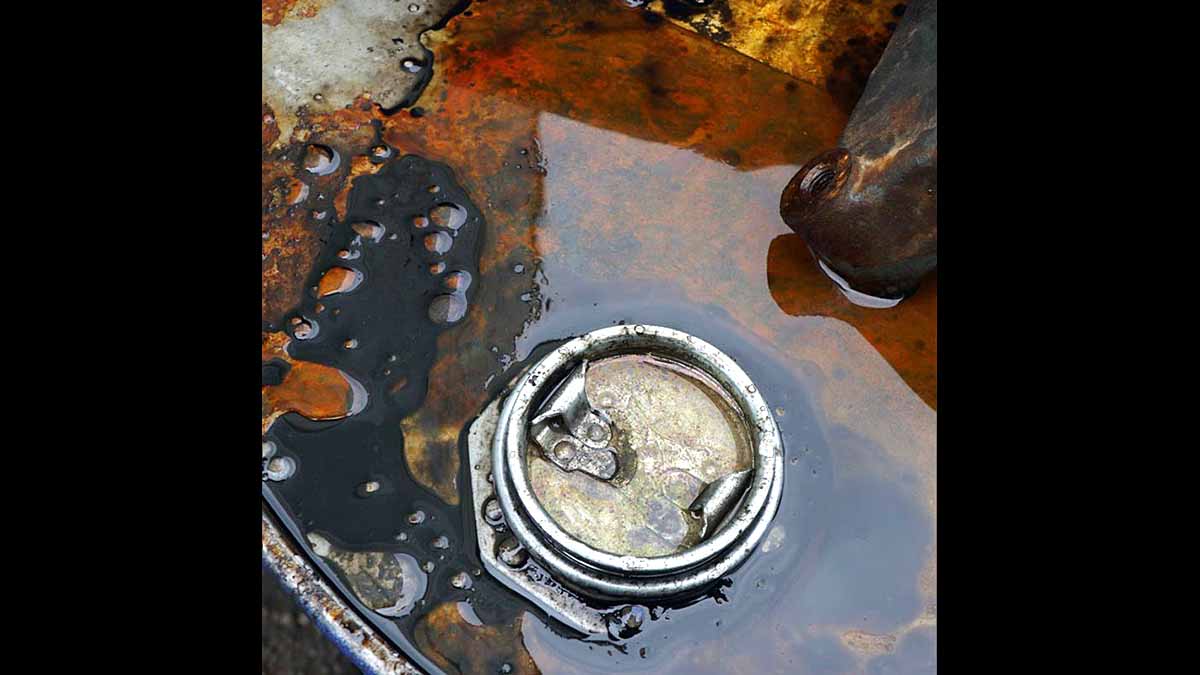For years, machine reliability practitioners have heard that outdoor lubricant storage is something to avoid, if possible. There are several reasons for this position, including:
- Risk of lubricant oxidation from prolonged exposure to heat from sunlight
- Risk of increased lubricant contamination
- Risk of container rusting and failure
Those reasons are all valid, but the risk of contaminant load is significant.
We’ve been told that, particularly during hot weather, lubricants can heat inside their steel containers, which increases internal pressures and risks air discharge and fumes.

And, during these hot periods, IF the hot container of oil experiences rapid contraction from routine rain-shower activities, then the same container experiences a vacuum condition that may be strong enough to draw any moisture settling around openings right into the reservoir.
This advice has been met with resistance from time to time. After all, these drums are SEALED! The steel openings are fitted with tight (sometimes too tight) plugs and bung fixtures.
Water isn’t getting through that! Evidence that demands a verdict!
This video paints a picture worth the proverbial thousand words:
While the openings seem like they should be airtight, they are not. Further, the amount of pressure, and then vacuum, that can occur with the heating and shrinking of the volume of lubricant in the container is substantial.
Beyond the increase or decrease of the vapor phase at the top of the drum (tote, keg, or pail), the lubricant inside the container expands and contracts substantially with heating and cooling.
The lubricant packagers know this and respond using a pre-planned chart that designates how much metered volume should be placed in the container of a given size based on the temperature of the lubricant during packaging.
For those products sold by the pound, instead of the ‘gallon,’ this isn’t needed. The weight doesn’t change as the temperature changes, but the space that the lubricant occupies undoubtedly does.
55 gallons of hot oil occupies a fair bit more space than 55 gallons of cold oil.
Left in direct sunlight, the liquid and gaseous phases expand, and at night, or following a shower, they contract, causing the drum to exhale and inhale around any possible pathway that might exist.
The air bubbles in the video demonstrate that the drum has no tight seal. Water will follow a vacuum into the oil and accelerate the corrupting process. Following multiple thermal cycles, it is possible to accumulate a fair volume of water in the drum. Nothing good happens after this process begins.
If your lubricants are staged outdoors, they are at risk of inducing vapor or liquid phase water. Options exist for ‘insta-storage’ bins made from steel shipping crates.
Please call AMRRI if you’d like to know more about options for proper lubricant storage. 615-771-6030
Thanks to Felipe da Silva Ramos and Gregory Mecomber for the videos and image of oil drum bungs.









